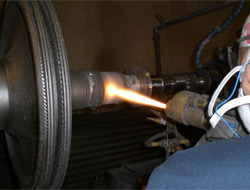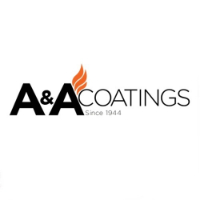
For a business to operate efficiently, everything must run smoothly. When metal structures experience heavy wear and corrosion, however, it can bring a business down in an instant. For protection against corrosion, metallizing and hot-dip galvanizing are used. Here we’re going to take a look at each process and how they work. Certain industries may rely more on one than on the other for their own unique reasons and to fulfill specific needs.
Metallizing
Relevant to numerous Industries, within the thermal spraying realm, metallizing is a much-used process. For greater protection against corrosion, rust, and more, melted metal coating materials are utilized to coat a surface through thermal spraying.
Frequently used in metallizing are aluminum and zinc. Aluminum and zinc-based materials are used during metallizing because they both protect surfaces. Strong adhesion to the substrate, when the metallizing is successful, is one of its most important aspects. Only when proper preparation of a surface occurs, however, can this happen. To minimize flash rusting, all on the same day the area to be coated must be vacuumed, cleaned, and metallized. Ordinarily, because without sacrificing quality this can be quickly done in the metallizing process, this does not present a problem.
For long-term protection, field metallizing has become a cost-effective, viable approach thanks to new technology used in recent years.
Hot-Dip Galvanizing and Regular Galvanizing
To prevent metal surfaces from corroding, galvanizing is frequently done. There is hot-dip galvanizing and regular galvanizing. Between the two, the key difference is that a rough finishing is common for hot-dip galvanized structures. Whereas, there is a sharp and smooth finishing to most galvanized materials.
Looking specifically at hot-dip galvanizing, it is a process using zinc to coat steel and iron. When immersed in a zinc molten bath, it alloys with the base metals surface. Temperatures for this process hover right around 840°F (449°C).
Zinc oxide is formed when a reaction with oxygen occurs (when exposed to the atmosphere) and, reacting further with carbon dioxide, zinc carbonate is formed. Protecting metal underneath from corrosion, this fairly strong material results in a dull gray color. Without the cost of stainless steel, this process is used where corrosion resistance is needed and, in terms of cost and lifecycle, is considered superior. The crystallization patterning on the surface of a treated part identifies the process. This is sometimes referred to as “spangle”.
To improve the fluidity of the bath, to the molten zinc bath lead is sometimes added. Additionally, against uneven heat distribution, it protects the kettle. It also makes dross recycling easier, helps prevent floating draws, and more. This process (of adding lead to the bath) is, however, frowned upon in the United States by environmental regulators.
Experts in Thermal Spray
For decades, A&A Coatings has provided protective coatings through the thermal spray processes for numerous industries. We protect parts, machinery, and other surfaces with any number of coating materials. We can also treat surfaces for traction and other final specifications.
By protecting the surfaces involved in your industry, you can lessen downtime, decrease maintenance costs, and generally improve your bottom line. Sounds good, doesn’t it?Contact us today if you’d like to know how A&A Coatings can assist your industry and business with thermal spray coatings.

